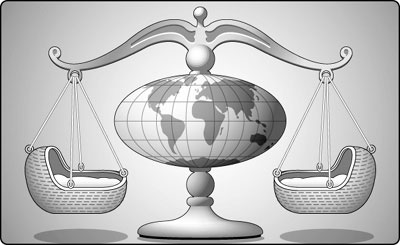Continuing issues and debate concerning transnational commercial surrogacy during the COVID-19 pandemic and beyond
By Yuri Hibino, Sonia Allan, and Damian Adams,
BioNews
| 11. 30. 2020
The regulation of surrogacy varies around the world. Most countries that have laws, prohibit all forms of surrogacy, while several permit altruistic arrangements. A small number permit commercial surrogacy arrangements, and accept commissioning couples, or singles from nations where prohibitions exist. As a result, issues abound. For example, despite growing recognition that children have a right to information about their birth mother, gamete donor(s), and genetic siblings, transnational arrangements may provide little to no opportunity to build relationships when separated by language, culture, and/or location. Issues regarding the sale and commodification of children persist; cases of child abandonment are known. Trafficking of women across borders, bonded labour, health risks associated with surrogacy and egg donation, and ill-treatment of surrogates and intending mothers reported.
In 2020, COVID-19 also saw up to 1000 babies left in hospitals (or orphanages) in Russia, with intending parents unable to travel. In the Ukraine, babies were cared for in hotel rooms by nurses or nannies, or placed into public care (see BioNews 1048). Some surrogates struggled as they bonded with the baby or worried...
Related Articles
By Jonathan Matthews, GMWatch | 12.11.2025
In our first article in this series, we investigated the dark PR tactics that have accompanied Colossal Bioscience’s de-extinction disinformation campaign, in which transgenic cloned grey wolves have been showcased to the world as resurrected dire wolves – a...
By Jenny Lange, BioNews | 12.01.2025
A UK toddler with a rare genetic condition was the first person to receive a new gene therapy that appears to halt disease progression.
Oliver, now three years old, has Hunter syndrome, an inherited genetic disorder that leads to physical...
By Simar Bajaj, The New York Times | 11.27.2025
A common cold was enough to kill Cora Oakley.
Born in Morristown, N.J., with virtually no immune system, Cora was diagnosed with severe combined immunodeficiency, a rare genetic condition that leaves the body without key white blood cells.
It’s better...
By Rachel Hall, The Guardian | 11.30.2025
Couples are needlessly going through IVF because male infertility is under-researched, with the NHS too often failing to diagnose treatable causes, leading experts have said.
Poor understanding among GPs and a lack of specialists and NHS testing means male infertility...




